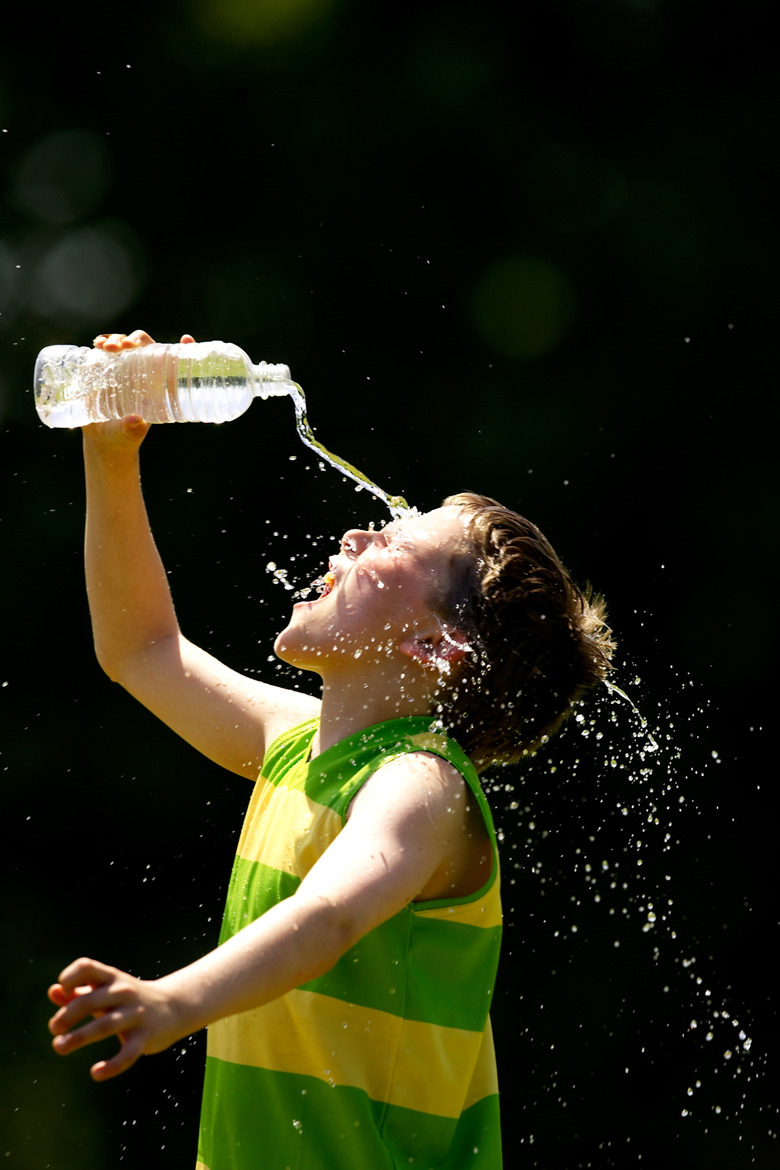What Critical Role Does Water Play In Homeostasis?
Water is the most abundant substance both on Earth and in the human body. If you weigh 150 pounds, you're carrying around roughly 90 pounds of water. This water serves a wide range of functions: it's a nutrient, a building material, a regulator of body temperature, a participant in carbohydrate and protein metabolism, a lubricant and a shock absorber. Water balance, or homeostasis, with respect to the internal environment is essential for survival.
Sources of Water Gain and Loss
Sources of Water Gain and Loss
Some of the ways in which you take in and lose water are obvious. Drinking fluids and eating food are the usual ways to add water to your system, while urinating, sweating, and exhaling water vapor are the most common sources of water loss; you also lose water in your gastrointestinal tract during bowel movements. How much fluid turnover you experience in a given day depends on your physical environment, your diet, your exercise level and certain medications you may be taking, but most people with intact cognition respond to inner signals of thirst appropriately enough to keep water input and water output remarkably well-matched as long as they have access to adequate fluids.
Disruptions to Homeostasis from Fluid Gain
Disruptions to Homeostasis from Fluid Gain
Having too much water in your body can be problematic just as having too little can be dangerous, even if you don't hear about it as much. If you consume a lot of fluid that contains solutes such as the electrolytes sodium and potassium, as many sports drinks do. the result is hypervolemia, or "too much volume," and here the concentration of solutes in your body fluids doesn't change much, if at all. If instead you consume an excess of plain water, this is called overhydration, and the concentration of solutes in your body fluids is lower than it should be.
Disruptions to Homeostasis from Fluid Loss
Disruptions to Homeostasis from Fluid Loss
Few adults have never fallen prey to a shortage of body water. This most often occurs during exertion in warm, humid conditions, when you tend to lose more fluid than you consume through sweating even when you're diligent about drinking liquids. You can lose up to 5 liters of sweat per day, which amounts to over 10 pounds of water. You lose some solutes in sweat but a far greater proportion of water, so this condition is called dehydration. On the other hand, when you lose both water and solutes at the same time, as in blood loss after an injury or severe and prolonged diarrhea, this is called hypovolemia, which can lead to stroke and even death owing to an unmanageable loss in blood pressure and subsequent cardiac arrest.
Mechanisms of Water Homeostasis
Mechanisms of Water Homeostasis
The chief way in which you regulate how much water your body loses or retains is through filtration in the kidneys. At the "downstream" end of your kidneys, water and solute filtered "upstream" are reabsorbed in amounts that vary in accordance with your body's needs and under the influence of hormones. Antidiuretic hormone is released when your body water drops and solute concentration increases, signaling the kidneys to reabsorb more water but not solute. The hormone aldosterone, on the other hand, is released from the adrenal glands when you become hypovolemic, resulting in greater retention of both water and solutes and a maintenance of blood pressure.
Cite This Article
MLA
Crystal, Mike. "What Critical Role Does Water Play In Homeostasis?" sciencing.com, https://www.sciencing.com/critical-role-water-play-homeostasis-23413/. 24 April 2017.
APA
Crystal, Mike. (2017, April 24). What Critical Role Does Water Play In Homeostasis?. sciencing.com. Retrieved from https://www.sciencing.com/critical-role-water-play-homeostasis-23413/
Chicago
Crystal, Mike. What Critical Role Does Water Play In Homeostasis? last modified August 30, 2022. https://www.sciencing.com/critical-role-water-play-homeostasis-23413/
